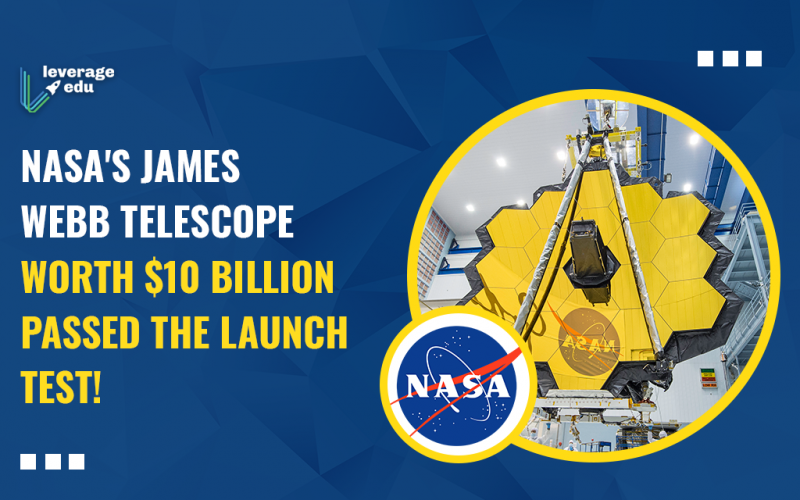For decades, astronomers have been chasing the theory of the first stars and the period when they began to shine. With the James Webb telescope, scientists are hoping to discover the most mysterious event by the year 2022. It is all set to launch later this year. Using this telescope, astronomers will be able to see back in time as far as the big bang and discover the first time the stars start to shine and sparkle. Check out the latest updates, facts, and everything about James Webb Telescope.

The Hubble Telescope is popularly known for discovering the black holes, nebulas, galaxies, and constellations that has been the most important source of peeking back into time and unraveling the wonders of the universe. While the telescope has discovered numerous things, the one thing it hasn’t been able to do is to look back in time to when the universe’s earliest stars began to glow, especially after the Big Bang.
Astronomers have finally figured out when the first stars began to shine using James Webb Telescope!
The moment, known as cosmic dawn, occurred around 250 to 350 million years after the Big Bang, and scientists believe they will be able to detect the birth of the first stars as early as next year.
Also Read: How to Become a Space Scientist in ISRO?
2022: Astronomers’ Most Highly Awaited Year
Astronomers hope that the James Webb Telescope, which is expected to launch later this year, will be able to delve back in time and witness the formation of the universe’s first stars fueled by nuclear fusion. According to many astronomers, the universe began nearly 13.8 billion years ago, but it was quiet and dark for a few million years before the hydrogen gas that filled the expanse came together under the influence of gravity to reach such high temperatures that fusion reactions occurred, resulting in the birth of the first stars (such as our Sun)
It is also believed that rather than a synchronized explosion, the formation of stars was a slow process that occurred one after another
Prof Richard Ellis, University College London stated “We found that the ages of the six galaxies we looked at were slightly different, so they didn’t all switch on at once. We now eagerly await the launch of the James Webb telescope. It has got seven times the light-gathering power of Hubble and extends further into the infrared, which is crucial for going back further in time.”
Also Read: Sirisha Bandla, The Indian-American Astronaut Flying to Space with Richard Branson
All Eyes are on the James Webb Telescope!
The James Webb telescope will take the position of the Hubble space telescope, which has served as our binoculars for seeing the cosmos so far. NASA has stated that the telescope would most likely be deployed on October 31, next year.
Once operational, it will provide a once-in-a-lifetime opportunity to investigate the origins of the cosmos. “The James Webb telescope will examine every phase of cosmic history: from the first luminous glows after the Big Bang to the formation of galaxies, stars, and planets to the evolution of our own solar system,” NASA stated.
The James Webb telescope’s primary objective is to look back into 13.5 billion years to see the first stars and galaxies forming out of the early universe’s darkness, assisting astronomers in comparing the faintest, earliest galaxies to today’s grand spirals and ellipticals, and peering right through to massive dust clouds where stars and planetary systems are forming.
This was all about the James Webb Telescope. For more entertaining and informative content, follow Leverage Edu on Facebook, Instagram, and LinkedIn.
-
When the James Webb telescope was first envisaged, how did the scientists know 30 years ago that they could position the telescope at exactly the right position without contacting some sort of space debris?

 One app for all your study abroad needs
One app for all your study abroad needs





















 45,000+ students realised their study abroad dream with us. Take the first step today.
45,000+ students realised their study abroad dream with us. Take the first step today.


1 comment
When the James Webb telescope was first envisaged, how did the scientists know 30 years ago that they could position the telescope at exactly the right position without contacting some sort of space debris?